(16456 products available)









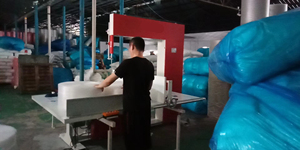






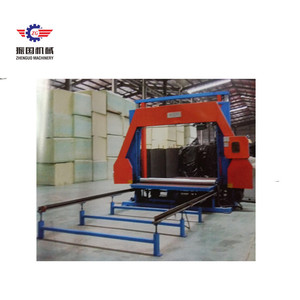






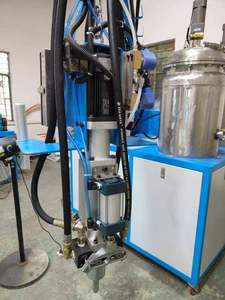

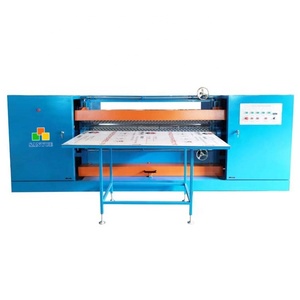


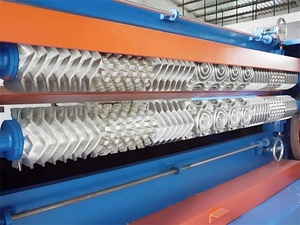









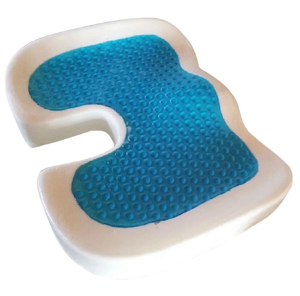


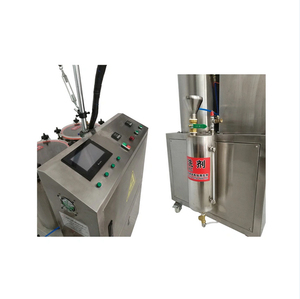




































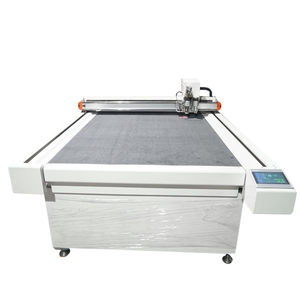







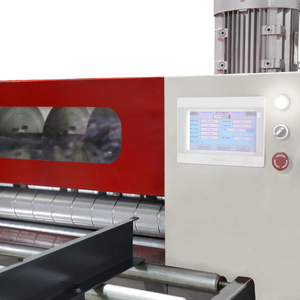






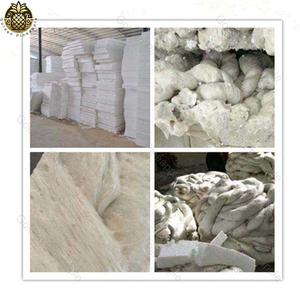

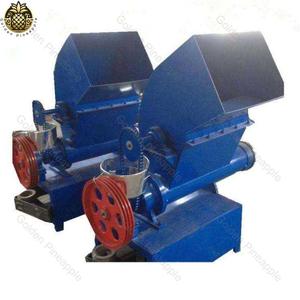










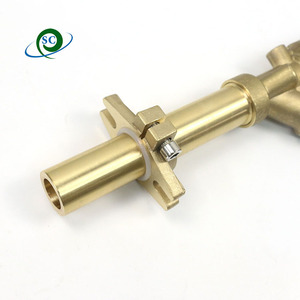

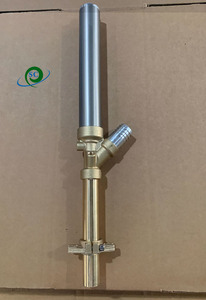








































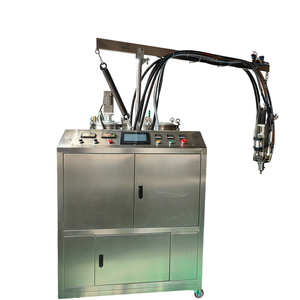



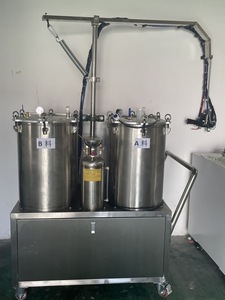
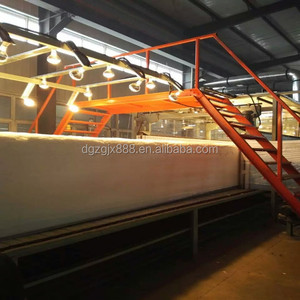

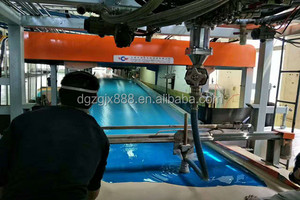

Dongguan foam machinery makes and processes various types of foams. Here are some types of Dongguan foam machines and the foams they handle.
Flexible PU Foam Packaging Machine
This machine makes soft and flexible polyurethane foams. Such foams have high flow rates but low resilience. They are used to fill voids and absorb shocks. These foams are also used to make cushions, pillows, and mattresses. Users of this foam machine should know that the end products will easily deform under pressure but regain their shapes when the pressure is released.
Rigid Foam Machinery
Double-Layer Foam Cutting Machine
This machine cuts foam into layers. It can produce both thick and thin foam layers, as well as single- and double-layer foams. Also, foams of various widths and lengths can be made with this type of foam machine. When cutting foams with a double-layer foam cutting machine, there will be no deformation on the surface of the foam.
Flexible Foam Compression Molding Machine
A compression foam molding machine makes flexible foams under high temperature and pressure. The machine forms the foam in a closed place. This machine creates softer products with diverse densities. Also, it reduces wastage of foam material. Businesses can use a compression foam molding machine to make cushions, automotive seats, bedding, and upholstered furniture.
Sponge Jointing Machine
This type of Dongguan foam machine glues two foam pieces together. It uses a hot melt adhesive to join the pieces properly. The machine can accurately stick foams with different shapes and sizes together. Using this glue machine is cheap, and it is an alternative to sewing and stapling methods.
Machine capacity
Tcan vary depending on the specific type and design. For example, foam cutting machines could process 100 boards per hour.
Power requirements
It depends on the machine type and size. For instance, small vertical compression molding machines could require a typical power supply of around 15kW, while large PU foam machinery may need 100-200kW or even higher.
Control system
Modern foam machinery usually adopts a computer numerical control (CNC) system or PLC so that users can easily program, set parameters, and monitor the process.
Sizing and weight
It can be various from small desktop cutters to large industrial units. For example, a typical horizontal cutting machine may measure around 2m x 1.5m x 1m and weigh about 500kg.
Cutting precision and speed
Foam cutting machines usually have high precision, which can achieve ±0.1mm or better. The speed also varies with the machine type, cutting method, and material density. For instance, hot wire foam cutters could achieve a speed of 10m/s.
Regular inspection
Users should inspect key parts, such as cutting blades, motors, and control systems, and check whether there are loose or damaged components. If something is wrong, they should be repaired or replaced immediately.
Lubrication
Foam machinery parts are usually lubricated to reduce abrasion and maintain smooth operation. Lubricate shafts, bearings, gears, etc. with suitable lubricants as per the manufacturer’s instructions.
Cleaning
Users should remove dust and residues from the surface and inside of the machines with a brush or air blower. They should clean the rails and blades of the cutting machines to avoid material burn.
Calibrate
Regularly calibrate and adjust the foam machinery’s cutting accuracy and parameter settings as per the specifications to ensure stable operation and cutting precision.
Mattresses:
Mfgrs. of mattresses use foam-cutting machines to create different foam layers for mattresses. Foam layers like memory foam give the mattress a contouring effect, while spring foam provides better bounce.
Automobile Interior:
The automotive industry uses foam machines to create comfortable seating as well as sound-deadening components. They apply rigid polyurethane foam to make lightweight, insulated vehicle parts such as door panels, roofs, and instrument panels. This not only lightens the vehicle's weight but also enhances thermal insulation. Additionally, closed-cell foam is employed to manufacture seals and gaskets that prevent water and air from infiltrating the vehicle.
Upholstered Furniture:
Upholstered furniture, including sofas, chairs, and office furniture, requires soft and comfortable cushions. Closed-cell foam, due to its buoyancy and water resistance, finds application in recreational boats, yachts, and water sports equipment like surfboards and jet skis. Furthermore, foam is utilized in therapeutic products such as foam rollers and therapy balls.
Packaging:
Foam cushioning is widely used in packaging applications to protect fragile and valuable products during transportation. Foam cushioning provides shock absorption, reducing the risk of damage to the packaged items.
Cleanroom:
Foam is used to make cleanroom garments and equipment that help to control contamination in critical environments such as pharmaceuticals, biotechnology, and semiconductors. This includes latex-free cleanroom gloves, face masks, and wipers.
Acoustic Foam:
Acoustic foam is engineered to absorb sound and reduce echo in various environments. This is particularly important in large auditoriums and music studios, where controlling sound propagation is crucial for achieving optimal sound quality.
Generally, some key parameters to consider when buying foam machinery are the machine's performance. Some of the factors that determine the machine's overall performance include the mixing ratio, efficiency, mixing uniformity, output size, energy consumption, and emission of the machine.
Choosing the right foam machinery also means selecting the most suitable machine for a specific application. Foam machines are manufactured for specific usages. For instance, foam machinery for the antifouling coating will differ from those designed for the production of polyurethane foam. It's also possible to find specialized foam machines for specific end products, such as rigid, flexible, integral skin, or semi-rigid polyurethane foams. Buyers need to consider the foam's desired properties, formulation compatibility, and production requirements to select the appropriate foam machine for their application.
Quality assurance is paramount when it comes to foam machinery. Buyers should settle for foam machines with reliable quality assurance programs. Such programs encompass comprehensive testing and inspections throughout the manufacturing process to ensure consistent quality and performance.
Choose foam machinery with a user-friendly interface and system. An intuitive control panel and clear instructions facilitate smooth operation and reduce learning curves for operators. Moreover, customer support services and technical assistance offered by the manufacturer after purchase are important to consider. This ensures prompt resolution of any issues that may arise during operation or maintenance of the foam machine.
Q1: What are the characteristics of foam?
A1: Foam has various characteristics depending on its type. Generally, foams are lightweight and offer thermal and sound insulation. They can also prolong products' lifespan through shock and vibration damping.
Q2: What is foam machinery making process?
A2: They are generally three main steps in the foam-making process. The first step involves combining the raw materials and chemicals and mixing them. Then, the materials are cured or baked, and lastly, the foam is cut into desired shapes and sizes.
Q3: Do foam-cutting machines have blades?
A3: While some foam cutting machines use blades, others use other methods like water jet, hot wire, or laser to make precise cuts.
Q4: Can customers get a prototype of the foam machine before placing a bulk order?
A4: Several suppliers can provide a prototype of the machine for customers to test and evaluate and ensure it meets requirements before placing a large order.